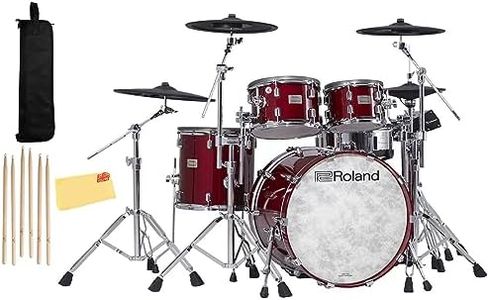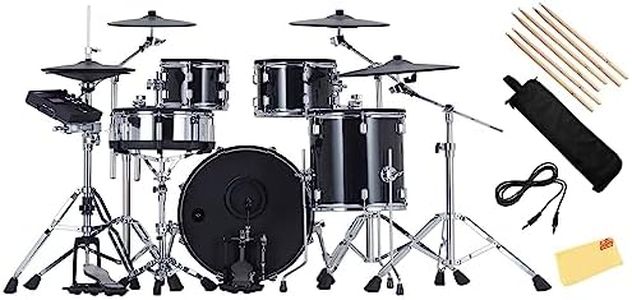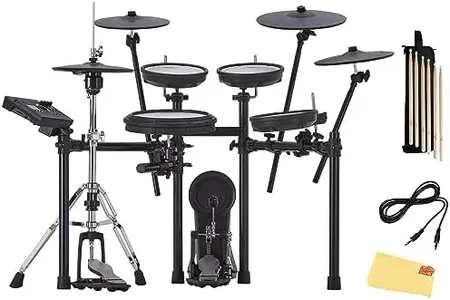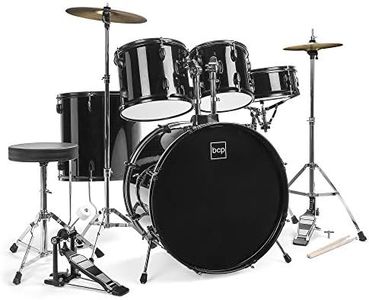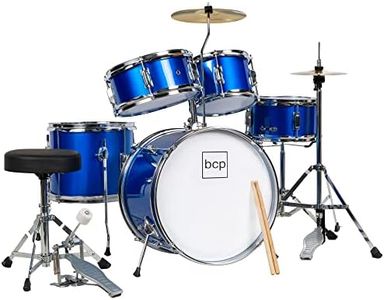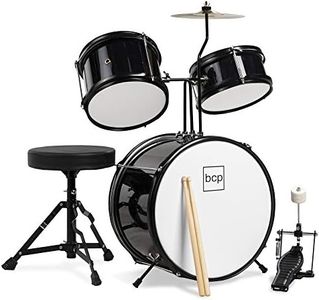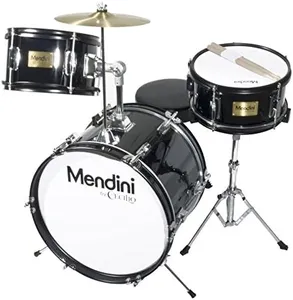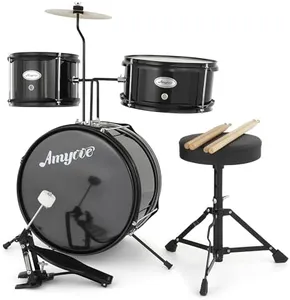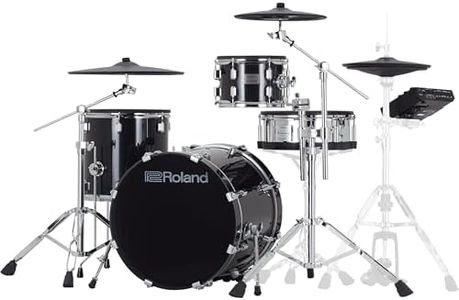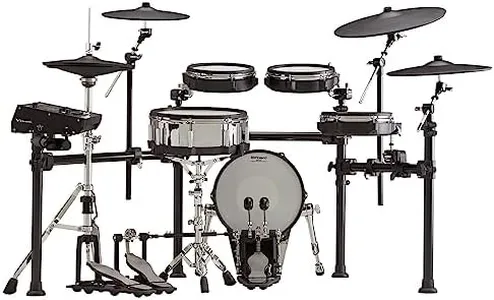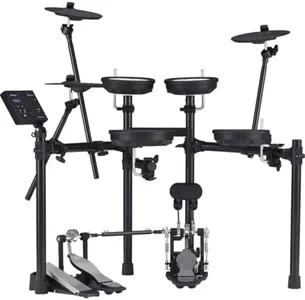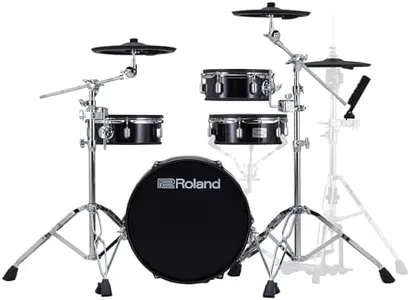10 Best Roland Electronic Drum Kits 2025 in the United States
Our technology thoroughly searches through the online shopping world, reviewing hundreds of sites. We then process and analyze this information, updating in real-time to bring you the latest top-rated products. This way, you always get the best and most current options available.

Our Top Picks
Winner
Roland V-Drums TD-27KV2 Electronic Drum Set Bundle with Drum Throne, Drumstick Bag, Audio Cable, 3 Pairs of Drumsticks and Austin Bazaar Polishing Cloth
Most important from
131 reviews
The Roland V-Drums TD-27KV2 Electronic Drum Set Bundle is designed for drummers seeking a high-quality, versatile electronic drum kit. One of its greatest strengths is the premium playability, featuring large, comfortable pads and famous mesh heads that provide a realistic drumming experience. The newly developed thin cymbals also contribute to this natural feel.
The Prismatic Sound Modeling technology included in the TD-27 module stands out by delivering a rich, responsive drumming experience with samples recorded in top studios and advanced modeling techniques. The module offers 75 preset kits, including 10 new kits and enhanced versions of popular ones, making it suitable for exploring different sounds and customizing setups. Additionally, the bundle includes practical accessories such as a sturdy drum throne, drumstick bag, three pairs of drumsticks, and an audio cable for connecting to other devices.
However, there are some drawbacks to consider. The bundle does not include essential components such as a kick pedal, snare stand, hi-hat stand, and SD card, which must be purchased separately. At 142 pounds, the drum set is quite heavy, potentially limiting portability and ease of setup. Despite these limitations, the Roland V-Drums TD-27KV2 remains a strong choice for drummers of all proficiency levels, particularly those looking for a comprehensive electronic drum kit with high-quality sound and advanced features.
Most important from
131 reviews
Roland VAD706-GC V-Drums Acoustic Design Electronic Drum Set Bundle with Drumstick Bag, 3 Pairs of Drumsticks, and Austin Bazaar Polishing Cloth - Gloss Cherry
Most important from
7 reviews
The Roland VAD706-GC V-Drums Acoustic Design Electronic Drum Set Bundle is an impressive offering for drummers seeking a high-quality electronic kit with an acoustic feel. One of its standout features is the TD-50X sound module, which includes over 900 onboard sounds and advanced sound modeling technologies. This ensures a rich and varied drumming experience, suitable for both practice and professional performance. The multi-sensor digital snare, ride, and hi-hat, along with the full-size wood shells, provide a realistic playing experience that closely mimics acoustic drums.
The included accessories, such as drumsticks and a polishing cloth, add value to the bundle. However, it's important to note that some key components like the kick pedal, snare stand, and drum throne are not included, which might require additional investment. The setup process could be more straightforward, but the double-braced chrome stands offer stability and durability. Connectivity options are robust, with a stereo XLR master output, multiple TRS direct outs, and a 32-channel USB audio/MIDI interface. This makes the kit highly versatile for recording and live performances.
Despite its weight and dimensions, the portability is reasonable for such an advanced setup. This drum kit is best suited for serious musicians who demand quality and realism in an electronic kit. For beginners, the investment may be substantial, but for seasoned drummers, the performance and quality on offer make it a worthy contender.
Most important from
7 reviews
Roland VAD507 V-Drums Acoustic Design Electronic Drum Set Bundle with 3.5mm Audio Cable, Drumstick Bag, 3 Pairs of Drumsticks, and Austin Bazaar Polishing Cloth
Most important from
7 reviews
The Roland VAD507 V-Drums Acoustic Design Electronic Drum Set offers an impressive blend of acoustic and electronic drum features. Its full-depth wood shells and varied-sized toms and kick drum provide an authentic feel, making it a standout for drummers who want a realistic playing experience. The cymbals, including a 12-inch V-Hi-Hat, 14-inch and 16-inch crashes, and an 18-inch ride, enhance playability and stage presence with their natural appearances and responsive playability.
The groundbreaking digital pad technology ensures that every nuance in your playing is captured accurately, thanks to the advanced TD-27 sound module which offers 75 preset kits and extensive customization options. This makes it a versatile choice for both practice and performance settings. The Prismatic Sound Modeling technology further enriches the sounds, providing a dynamic range that responds like an acoustic drum set.
The bundle includes useful additions like three pairs of drumsticks, a drumstick bag, and a polishing cloth, which are great for getting started right away. However, it's important to note that the set does not come with essential components like a kick pedal, snare stand, hi-hat stand, or drum throne, which means additional purchases are necessary to complete the setup. The drum kit is relatively compact with dimensions of 21 x 6 x 12 inches and a weight of 21 pounds, making it quite portable for an electronic drum set, although it may still require some effort to transport. This drum set is ideal for serious drummers looking for a high-quality, realistic playing experience, but beginners should be aware of the extra costs for the missing items.
Most important from
7 reviews
Buying Guide for the Best Roland Electronic Drum Kits
Choosing the right electronic drum kit can be a game-changer for your drumming experience. Whether you're a beginner, an intermediate player, or a professional, the right kit can help you practice quietly, record easily, and explore a wide range of sounds. To make an informed decision, it's important to understand the key specifications and how they align with your needs and preferences.FAQ
Most Popular Categories Right Now

